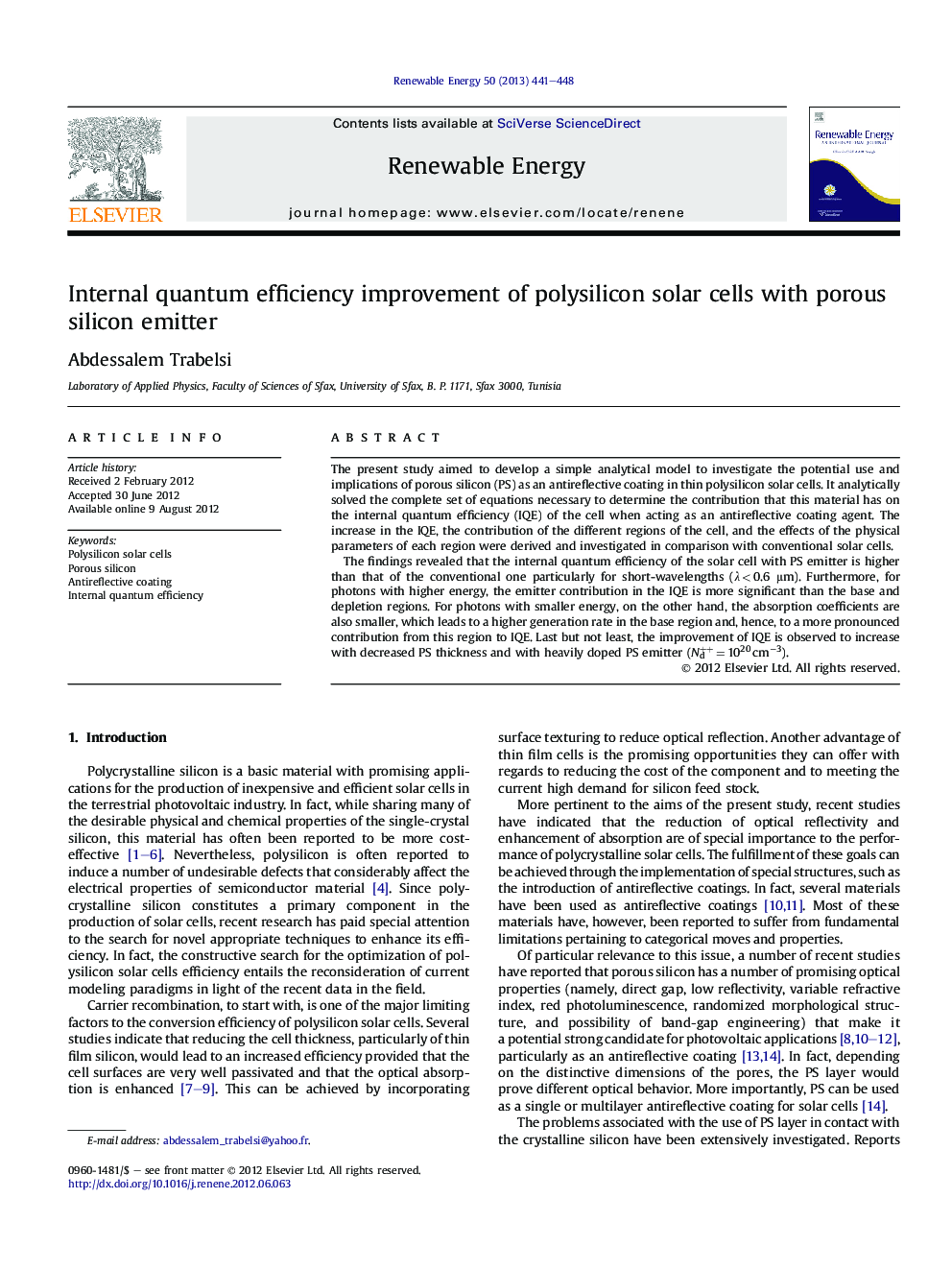| Article ID | Journal | Published Year | Pages | File Type |
|---|---|---|---|---|
| 300396 | Renewable Energy | 2013 | 8 Pages |
The present study aimed to develop a simple analytical model to investigate the potential use and implications of porous silicon (PS) as an antireflective coating in thin polysilicon solar cells. It analytically solved the complete set of equations necessary to determine the contribution that this material has on the internal quantum efficiency (IQE) of the cell when acting as an antireflective coating agent. The increase in the IQE, the contribution of the different regions of the cell, and the effects of the physical parameters of each region were derived and investigated in comparison with conventional solar cells.The findings revealed that the internal quantum efficiency of the solar cell with PS emitter is higher than that of the conventional one particularly for short-wavelengths (λ < 0.6 μm). Furthermore, for photons with higher energy, the emitter contribution in the IQE is more significant than the base and depletion regions. For photons with smaller energy, on the other hand, the absorption coefficients are also smaller, which leads to a higher generation rate in the base region and, hence, to a more pronounced contribution from this region to IQE. Last but not least, the improvement of IQE is observed to increase with decreased PS thickness and with heavily doped PS emitter (Nd++ = 1020 cm−3).
